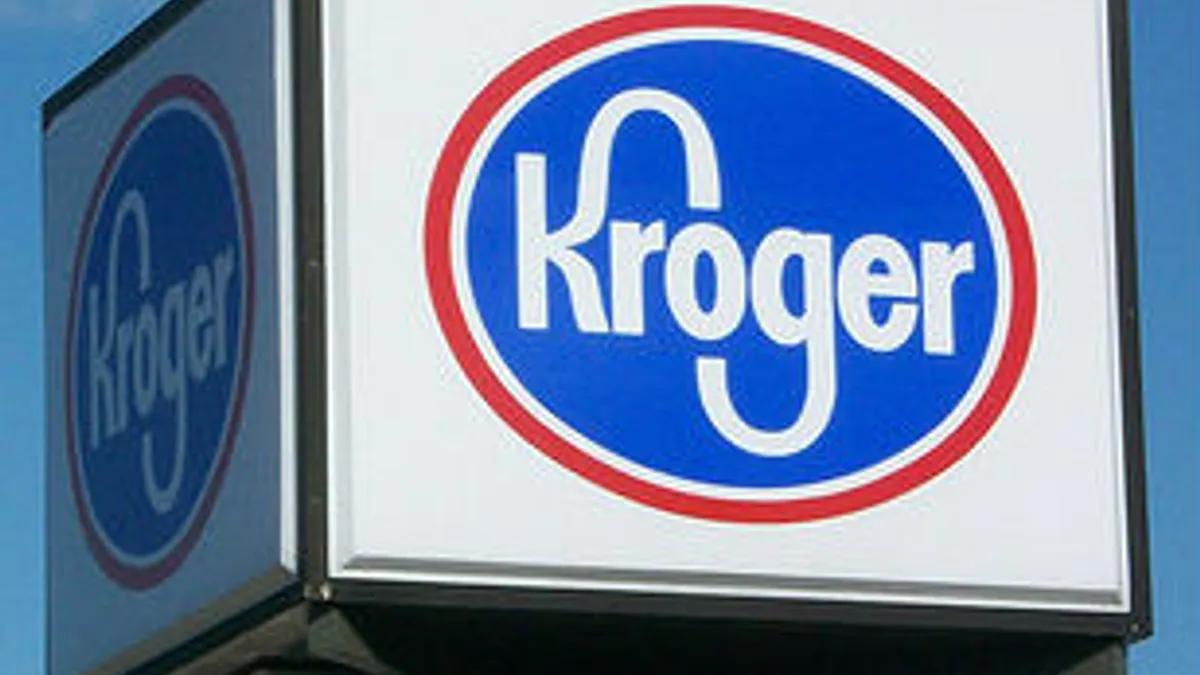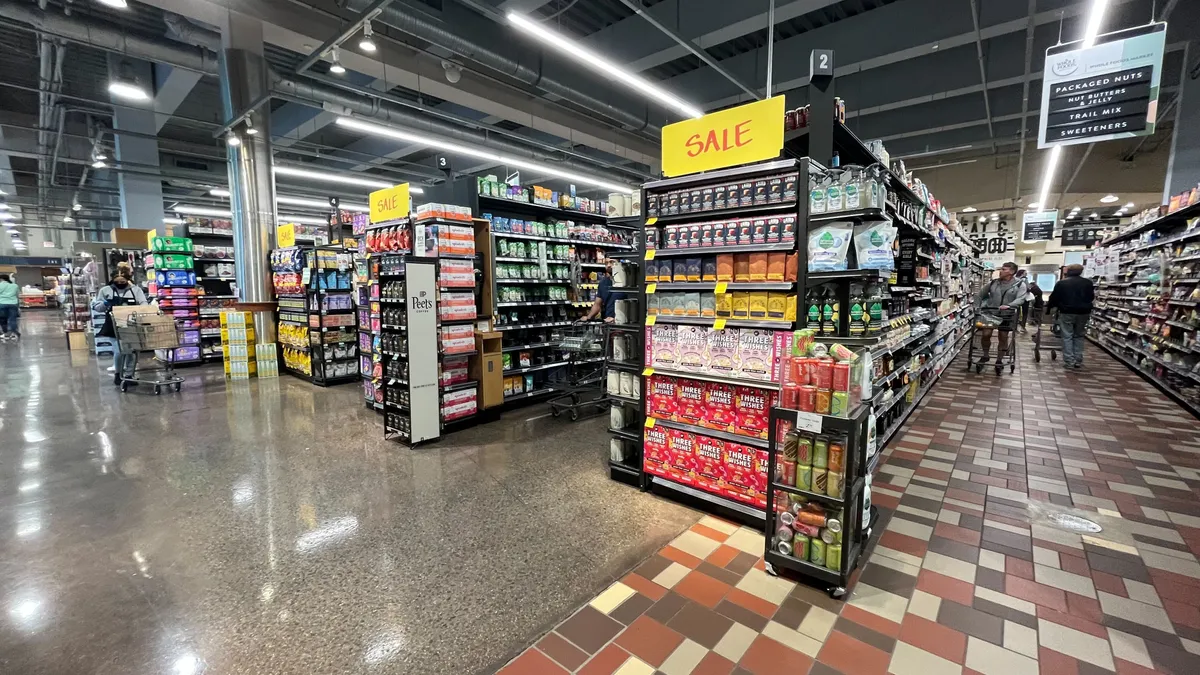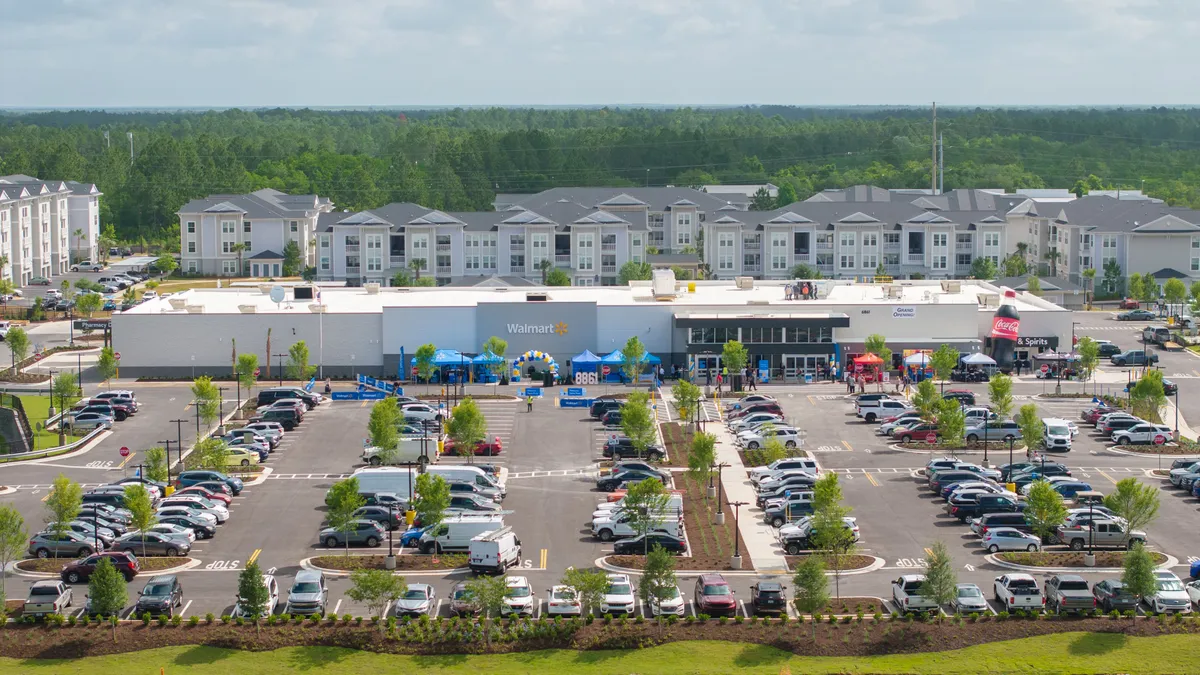Dive Brief:
- Kroger’s stock has plummeted more than 40% on the year, but the grocer may not be in dire straits yet, according to InvestorPlace contributor Dana Blankenhorn. The company, he writes, is increasing its sales each year, outperforms its dividend and has a stable debt level worth one third of its assets.
- Blankenhorn argues the grocer’s middle-of-the-road retailing style has gone out of fashion, but that Amazon’s acquisition of Whole Foods has been the main factor behind its drop in value.
- Kroger, he writes, needs to move more quickly on some of its experimental projects, like home delivery, meal kits and its new restaurant concept.
Dive Insight:
In addition to Amazon’s recent takeover, which should help Whole Foods earn back some of the sales Kroger has poached over the years, the Cincinnati-based retailer has battled immense pricing pressure from Walmart as well as discounters Aldi and Lidl.
Under assault from just about every angle, Kroger has dug in and is focused on defending its position through cost-cutting and deep price investments. The company has slowed its store growth and tried to trim costs through staff buyouts and supply chain efficiencies. Go into any Kroger store today, and you’ll see a swath of yellow sale tags and low-price signage.
The typically proactive retailer's move into defensive mode has spooked investors, and over the course of this year Kroger’s stock price has dropped by almost half. But the fact remains that Kroger has the resources to weather this storm, and has historically been very good at playing the long game. During the late 90s and early 2000s, Walmart’s furious growth stole market share away from Kroger and other traditional retailers. Kroger emerged a stronger retailer, and through careful long-term planning and utilizing customer analytics, put together a string of comp-store sales gains that lasted more than a decade.
Blankenhorn argues that Kroger is too reactive right now, but the retailer is actually leading growth in a few key areas. This includes private label, which accounts for around 20% of Kroger’s sales and features leading brands like Simple Truth, now a nearly $2 billion business for the company. The retailer’s ClickList program, meanwhile, is one of the top e-commerce platforms in the industry, leading Kroger’s 126% digital sales growth during the last financial quarter. And then there’s Kroger’s advancing store technology and its best-in-class use of analytics through its 84.51 data arm.
These investments will help Kroger as it deals with pricing pressure, rising labor costs and other challenges. Still, as Blankenhorn points out, it feels like the company needs to make a big, bold move to improve its growth prospects. Barclays analysts have recommended the company buy a meal kit company, which could bolster Kroger’s e-commerce footprint and build out its presence in the category faster than its own Prep + Pared kits are moving. Kroger could make an acquisition, too, potentially in the specialty grocery space.
Or perhaps there’s another industry game-changer on the horizon. Reports claim that Ahold Delhaize has hired advisors regarding a possible merger with Kroger. While it’s still early for speculation, a Bernstein analyst just weighed in the possible deal, noting that it would result in synergies of around $1.8 billion for both companies.









